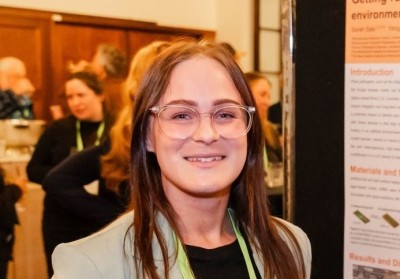Four students share their most interesting myrtle rust insights
 Hone Ropata (recent Master’s student)
Hone Ropata (recent Master’s student)
The most interesting thing I learned over the course of my research was the way different host species react to similar dosages of inoculum in the same conditions. Inoculating host plants and watching disease development for the first 21 days was amazing. I am very grateful for the opportunity to have carried out this work.
 Sarah Sale (current PhD candidate)
Sarah Sale (current PhD candidate)
One interesting thing I learned during my research is that Austropuccinia psidii (the causal agent of myrtle rust) has the unique ability to penetrate any part of a leaf’s surface. This is a different strategy to other rust fungi, which primarily enter leaves through their stomata. This characteristic not only expands the range of host plants that Austropuccinia psidii can infect but also suggests that it exerts a greater protrusive force compared to other rust fungi.
 Dan Cu (current PhD candidate)
Dan Cu (current PhD candidate)
Over the past 18 months of my study, I've experienced two contradictory joys. On one hand, I developed the habit of checking for rust on all the myrtles and even non-myrtaceous plants I came across, feeling joy when I found them healthy and uninfected. On the other hand, in the PC2 glasshouse, my joy comes from observing yellow-stained leaves with rust pustules of my plants due to the successful rust inoculation. I feel thankful for my infected plants inside of the glasshouse, which are helping to further my research, and also the healthy plants outside of the glasshouse.
 Vladislav Kholostiakov (current PhD candidate)
Vladislav Kholostiakov (current PhD candidate)
The most exciting thing I learned during my PhD is that bacteria naturally occurring in or on a plant can modify the metabolism and behaviour of fungi, changing the properties of endophytic mycobiome and, probably, even making pathogenic fungi such as Austropuccinia psidii less virulent. The interactions between bacteria and endophytic fungi may be the key to understanding why fungal biocontrol agents do not work in particular conditions. It has already been shown that some fungal genera prefer to form relationships with certain bacterial taxa, and bacteria can significantly enhance the biocontrol potential of fungi. This emerging field of research needs further investigation.
